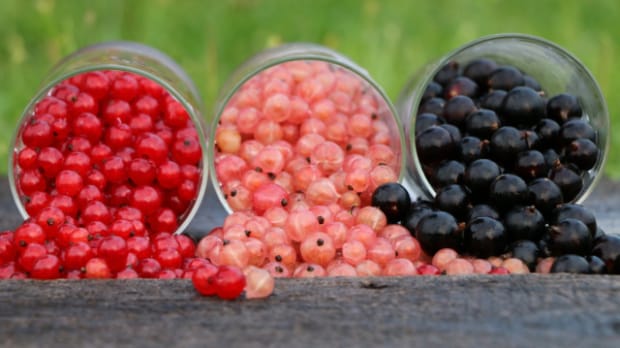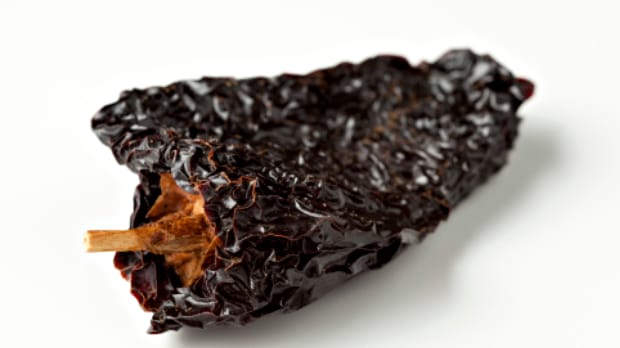What is a Currant?
Currant, pronounced kəˈrɑnt, is a type of fruit that is believed to have originated from Corinth, a popular city in ancient Greece. It’s named after the city where it was mostly grown and exported in huge quantities. Currants are closely related to gooseberries and come in three different colors: black, red, and white, which often look pink when ripe. The black currant variant is commonly used to produce syrups, liqueurs, and jams (such as cassis). In contrast, the red and white currant berries are typically eaten raw as a snack or ingredient in various recipes.
On the other hand, the term ‘currant’ can also refer to a tiny grape known as Zante grape that grows in Greece mainly for baking. Despite the variation in color and purpose, all types of currants are nutritious and provide various health benefits. Therefore, incorporating currants into your diet can be an excellent way to add some flavor and nutrition to your meals.

Nutritional Benefits
Today, I want to talk about currants and their awesome nutritional benefits. Currants are tiny fruits that come in a variety of colors such as red, black, and white. They are packed with nutrients that can greatly benefit your health. First, currants contain high levels of antioxidants which can help fight against harmful free radicals in your body. These little fruits are also rich in Vitamin C, which is essential for a healthy immune system.
In addition, currants are a great source of fiber which aids in digestion, helps to regulate blood sugar levels, and keeps you feeling full for longer periods of time. What’s more, these delicious little guys have also been linked to reducing the risk of heart disease, improving vision, and enhancing brain function. Overall, currants are a wonderful addition to any diet and can have numerous benefits for your health. So next time you spot them at the grocery store, grab a handful and enjoy the taste and nutritional benefits they have to offer!
Types Available

If you’re into fruits, then you may have already heard of currants. The currant berry comes in different varieties, and each type has its own set of characteristics. Here are some of the different types of currants available:
Black Currants: These currants have a dark color and are popularly used for making jams, jellies, juices, and syrups. Black currants have a sharp flavor and are rich in antioxidants, vitamins, and minerals.
Red Currants: These currants are smaller in size and have a bright red color. They are often used for decorating desserts or as a garnish for cocktails. Red currants have a tart taste and are rich in vitamin C.
White Currants: These currants are the rarest type and are sweeter than the other types. White currants have a translucent color and often look pink. They are often used for making wines or baking pies. When it comes to choosing currants, it’s important to pick the freshest and ripest ones. Currants are a great source of nutrition and add a unique flavor to any dish or drink. So, give them a try and see which type you like best!
What are the Best Uses?
If you’re looking for a fruit that’s tangy, sweet, and versatile, then you should definitely try currants! These little berries come in different colors – red, black, and white – each carrying a unique flavor profile that can be used in various dishes. Red currants are a great addition to jams, jellies, and syrups due to their tartness. They also make an excellent garnish for meat dishes or a colorful accent to salads.
Black currants, on the other hand, are more aromatic and often used in desserts, such as pies, tarts, and sorbets. They’re packed with Vitamin C and other essential nutrients, so adding them to your diet can also give you a health boost.
Finally, white currants, which are the sweetest of the three, can be eaten fresh or used in preserves, cakes, and mousses. Their delicate flavor pairs well with cheese and yogurt too! In summary, currants can be a great addition to your recipes, regardless of color. They’re easy to find and can be used in both sweet and savory dishes. Give them a try and let your taste buds be the judge!
How do You Store Currants?
Are you a fan of currants and wonder how to keep them fresh and tasty for longer? Before you store currants, inspect them thoroughly for any signs of spoilage, such as mold, discoloration, or softness. Remove any damaged or overripe berries and discard them.
Next, rinse the berries gently. To remove any dirt, debris, or pesticide residues, rinse your currants with cool running water. Be careful not to crush or bruise them, as they are delicate and can easily lose their shape and flavor. After washing, gently pat your currants dry with a clean towel or paper towel. Avoid rubbing too hard, as this can damage the skin and release juices. Choose the right container. To store currants properly, select a container that is clean, dry, and breathable. A shallow bowl, tray, or plate lined with paper towels or a cloth works well. Alternatively, you can use a zip-top plastic bag or airtight container with holes or vents to allow for air circulation.
Currants are best kept in the refrigerator, where they can stay fresh for up to a week. Avoid storing them near strong-smelling foods or in crowded areas, as they can absorb odors and get squished. If you have more currants than you can eat, freeze them for future recipes such as smoothies, jams, or baked goods. To freeze currants, spread them in a single layer on a baking sheet and place them in the freezer until firm. Then transfer them to a freezer-safe bag or container and store for up to six months. With these simple tips, you can enjoy the flavor and nutrition of currants all year round. Happy cooking!
How to Prepare Currants
If you’ve ever walked by a pile of currants at the farmer’s market or grocery store, you might have wondered what to do with them. Currants are a small, tart fruit that can be eaten fresh, used in baking, or made into jams and jellies. Here’s how you can prepare them: Look for fresh, plump currants that are free from mold or blemishes. Rinse the currants in a colander under cool, running water. Gently pat the currants dry with a clean towel. Remove the stems and any leaves from the currants.
If you’re using the currants for baking or making jam, you may want to remove the seeds. To do this, gently press each currant with the flat side of a knife or a spoon, and the seeds should pop out. Once you’ve prepared the currants, you can store them in the refrigerator for up to a week, or freeze them for longer storage. Currants can add a tart, flavorful punch to your culinary creations. Whether you’re making a fresh and fruity salad, baking a tart or making a spread for your toast, currants are a versatile and delicious ingredient to work with.
When are Currants in Season?
As a food blogger, I firmly believe that it’s important to know which seasonal produce is at its prime time. Today, we’re talking about currants! Currants, the tiny tart fruit, might be a bit underrated, but they are packed with flavor and nutrition. You might be wondering, “What is the best season for currants?” Well, folks, the answer is summer! Currants are at their best from June to August. They make a great addition to salads, desserts, or even just as a snack on their own. So go ahead and indulge in some fresh currants while they’re in season – your body and taste buds will thank you!
Improve Your Health With Seasonal Eating
What to Serve Currant With?
- Yogurt
- Oatmeal
- Muffins
- Smoothies
- Pancakes
- Porridge
- Scones
- Salads
- Granola
- Jam
What Traditional Cuisines Use Currants?
Traditional cuisines from across Europe, the Middle East, and North Africa all use currants in various recipes. Greek cuisine often uses currants in savory dishes such as pilaf, while British cuisine is known for its sweet currant-based dishes such as scones and puddings. Scandinavian and Baltic cuisines also commonly incorporate currants into their baking. In addition, currants are a common ingredient in many Middle Eastern and North African dishes, such as tagines and couscous.
Tasty Recipes
- Red Currant Lemon Loaf
- Pistachio-Currant Couscous
- Currant Scones
- Red Currant Jam
- Red Currant Crostini with Goat Cheese
Key Takeaways
- A currant is a small, sweet, and tart berry that is a good source of dietary fiber, vitamins, and minerals.
- Currants can be eaten fresh or used in recipes such as jams, jellies, pies, muffins, and other baked goods.
- Currants should be stored in a cool, dry place and kept away from direct sunlight.
- Wash currants gently before using them in recipes or eating them raw.
- Add currants to salads for a burst of flavor and nutrition.
- Cook currants slowly over low heat to bring out their natural sweetness.
- Use currants in sauces or stews to add a tart flavor to the dish.
- Mix currants with other fruits for a delicious and nutritious snack or dessert.
References: The Health Benefits of Eating Currants | The nutritional value of currants and their potential health benefits | The Health Benefits of Black Currants | Health Benefits of Currants: A Review | Currants: Health Benefits, Antioxidant Activity and Nutritional Value




